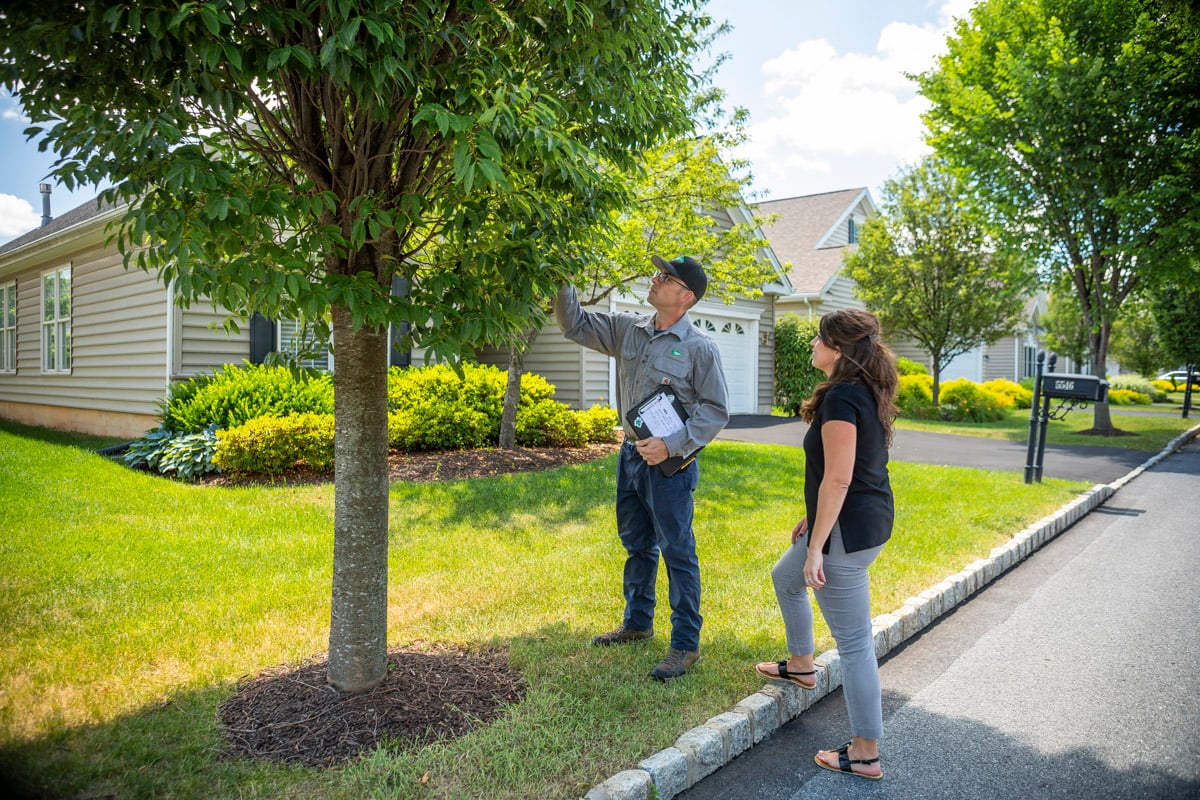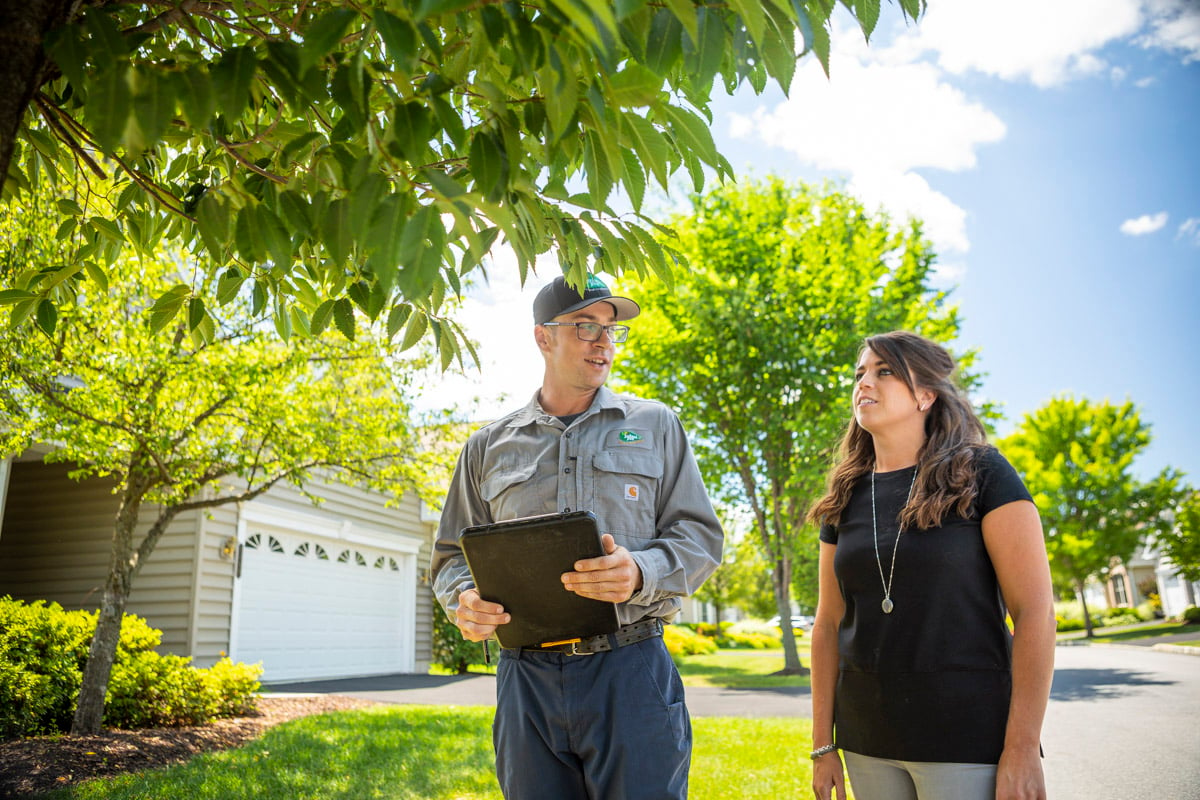Just like how a great parent knows when to give just the right amount of care and attention to their children, the same goes for your trees and shrubs.
To ensure their health and growth, it's important to follow helpful tips on watering.You should know the signs of an overwatered tree, along with how often to water your trees.
Know What an Overwatered Tree Looks Like
Trees and shrubs need moist soil to thrive. Not only do they need water, properly saturated soils make it easier for roots to push through and grow their network.
It’s more difficult to darn near impossible for a healthy root system to expand if soils are intermittently dry and hard. That being said, you can overwater trees. There is a point where enough is enough when it comes to soil saturation.

Just as spoiling your kids leads to soft, weak and helpless adults who can’t make their way in the world, overwatering plants causes their roots to become diseased, rotted and mushy.
Eventually, oversaturated soil will drown the root system altogether.
In best case scenarios, the trees will limp along, unable to develop the root surface area required to absorb nutrients. In worst case scenarios, beautiful trees and shrubs will just up and die.
So you might be wondering how to know if you are overwatering a tree, here are some important signs to look for.
Signs you're overwatering trees:
- The soil is always damp or swampy
- Young leaves turn light green or yellow
- Leaves are green but brittle
- Young shoots look wilted
- You see moss, algae or mushrooms growing around the base of the plant
Signs you're underwatering trees:
- Dry soil
- Older leaves turn yellow and dry up or drop off
-
Leaves will look wilted or curled
Tree Watering Tips to Create Perfectly Moist Soil
The following tips will help you ensure your mature trees and shrubs get just the right amount of water.
Notice we said, “mature trees”? Newly planted trees have greater water demands, so it's important to plan accordingly.

1. Soak the tree soil about 12 inches deep.
This is considered a “deep watering” method, which encourages roots to develop deep into the soil, where moisture is more readily available more often.
Shallow watering causes roots to grow outward, just under the surface of the soil, making them more prone to heat, dehydration and soil compaction. Shallow root systems also leave your trees more vulnerable to blowing over during storm season.
When roots grow deep and wide, you’ll wind up having to water less and will have stronger and more securely anchored trees. It’s a win-win.
2. Keep water off leaves and needles.
Firstly, water droplets act just like a magnifying glass when penetrated by the sun. Thus, watering leaves and needles when they’re in full sun will cause the foliage to burn.
Less foliage means less photosynthesis, which leaves a tree malnourished. Also, continuous water droplets on the leaves and needles can make them more prone to catching diseases.
3. Invest in soaker hoses and/or drips.
Soak hose and drip systems have revolutionized the irrigation situation.
When paired with a high-quality timer, irrigating your trees and shrubs becomes a virtual “no-brainer” (although you should inspect irrigation systems weekly to make sure they’re operating properly).
Both soakers and drip systems are designed to provide a steady but minimal amount of water, just around the base of the plant at its root zone. This minimizes evaporation rates, water runoff and water waste.
How Often to Water Trees?
How often and how much to water trees depends on a variety of factors. Here are important things to consider to make sure you don't overwater your trees.
1. Rainfall
If it rains, switch the irrigation off and enjoy the free water. Turn it back on when it makes sense, depending on how saturated your landscape is after the storm.
After a good rain storm, you may not need to irrigate for a few days or more.
2. The Type of Tree
Some tree species need more water than others. This is one reason we encourage planting trees and shrubs that are native to the northeast.
Native species are the most adapted to our historical climate and environment, which means they need less artificial watering and are typically more resistant to native plant diseases and pests.
3. Hot, Dry Weather
When temperatures remain high and we’re in the middle of a dry spell, you’ll need to irrigate a little more – letting the water drip longer than usual.
Windy days will also dry things out quicker, so pay attention to that too.
4. Mulch Around Your Trees
If you use a healthy bed of mulch around your tree base (about 3-4 inches is sufficient), you will have to water far less often than if you went mulch-less.
In addition to preventing water loss through evaporation, mulch also prevents weed growth and enriches the soil beneath it, adding to soil nutrients and encouraging healthy microbe lifecycles.
Need More Advice? Ask Our Tree Care Experts
Not sure whether your trees and shrubs are getting too little or too much water?
We can make recommendations based on our observations and can set you up with of our Plant Health Care Programs.
With the right care for your trees, you’ll gain valuable peace of mind. If you’re interested in having your trees inspected and their health assured, contact us for a free consultation or give us a call at 833-JTE-TREE.



